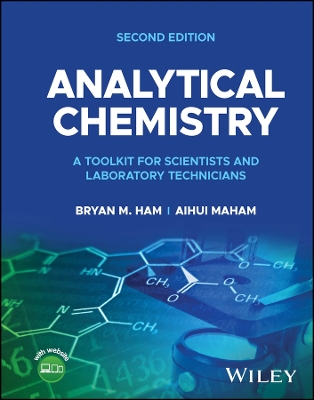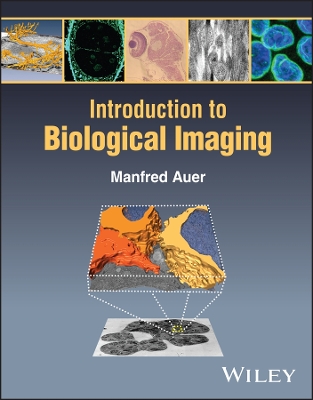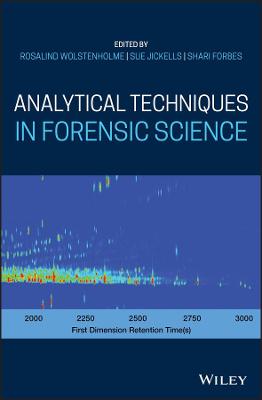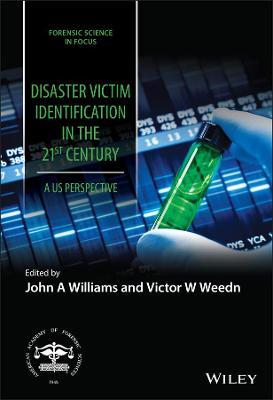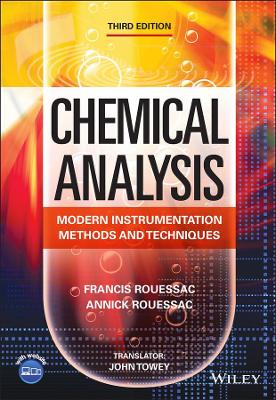Fingerprint Development Techniques
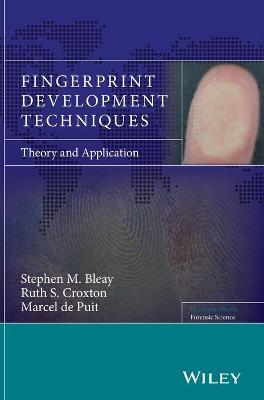 -15%
portes grátis
-15%
portes grátis
Fingerprint Development Techniques
Theory and Application
Croxton, Ruth S.; De Puit, Marcel; Bleay, Stephen M.
John Wiley & Sons Inc
04/2018
520
Dura
Inglês
9781119992615
15 a 20 dias
1110
Acknowledgements xiii
1 Introduction 1
Stephen M. Bleay and Marcel de Puit
References 10
2 Formation of fingermarks 11
Stephen M. Bleay and Marcel de Puit
2.1 Introduction 11
2.2 Initial contact 12
2.3 Interaction outcomes 13
2.4 The finger 17
2.5 The surface 24
2.6 Removal of the finger from the surface 30
2.7 Summary of the initial contact 32
References 33
3 Composition and properties of fingermarks 35
Ruth S. Croxton, Stephen M. Bleay and Marcel de Puit
3.1 Chemical composition of fingermarks 35
3.2 Biological properties of fingermarks 55
3.3 Physical properties of fingermarks 57
References 62
4 Ageing of fingermarks 69
Stephen M. Bleay and Marcel de Puit
4.1 The 'triangle of interaction' 69
4.2 The fingermark 70
4.3 The surface 70
4.4 The environment 78
4.5 Interactions 81
4.6 Time 94
References 96
5 Initial examination and the selection of fingermark enhancement processes 99
Stephen M. Bleay
5.1 Introduction 99
5.2 Processing options 100
5.3 Process selection 103
5.4 The processing environment 105
References 109
6 Optical detection and enhancement techniques 111
Stephen M. Bleay
6.1 Introduction 111
6.2 Current operational use 116
6.3 Visual examination 117
6.4 Fluorescence examination 125
6.5 Ultraviolet reflection 138
6.6 Infrared reflection 141
6.7 Colour filtration and monochromatic illumination 144
6.8 Multispectral imaging 149
References 151
Further reading 153
7 Vapour phase techniques 155
Stephen M. Bleay and Marcel de Puit
7.1 Introduction 155
7.2 Current operational use 156
7.3 Superglue/cyanoacrylate fuming 158
7.4 Vacuum metal deposition 172
7.5 Iodine fuming 181
7.6 Radioactive sulphur dioxide 185
7.7 Other fuming techniques 189
References 193
Further reading 196
8 Solid phase selective deposition techniques 199
Stephen M. Bleay
8.1 Introduction 199
8.2 Current operational use 200
8.3 Powders 201
8.4 ESDA 213
8.5 Nanoparticle powders 216
References 219
9 Amino acid reagents 221
Stephen M. Bleay
9.1 Introduction 221
9.2 Current operational use 223
9.3 Ninhydrin 224
9.4 1,8-Diazafluoren-9-one 231
9.5 1,2-Indandione 237
9.6 Ninhydrin analogues 242
9.7 Fluorescamine 246
9.8 o-Phthalaldehyde 250
9.9 Genipin 252
9.10 Lawsone 256
9.11 Alloxan 259
9.12 4-Chloro-7-nitrobenzofuran chloride 260
9.13 Dansyl chloride 262
9.14 Dimethylaminocinnemaldehyde and dimethylaminobenzaldehyde 263
References 268
Further reading 272
10 Reagents for other eccrine constituents 275
Stephen M. Bleay
10.1 Introduction 275
10.2 Current operational use 276
10.3 4-Dimethylaminocinnamaldehyde 277
10.4 Silver nitrate 279
References 281
Further reading 282
11 Lipid reagents 283
Stephen M. Bleay
11.1 Introduction 283
11.2 Current operational use 285
11.3 Solvent Black 3 (Sudan Black) 286
11.4 Basic Violet 3 (Gentian Violet, Crystal Violet) 290
11.5 Oil Red O (Solvent Red 27) 295
11.6 Iodine solution 297
11.7 Ruthenium tetroxide 299
11.8 Osmium tetroxide 301
11.9 Europium chelate 302
11.10 Natural Yellow 3 (curcumin) 305
11.11 Nile Red and Nile Blue A 308
11.12 Basic Violet 2 311
11.13 Rubeanic acid-copper acetate 313
11.14 Phosphomolybdic acid 315
References 317
Further reading 320
12 Liquid phase selective deposition techniques 321
Stephen M. Bleay
12.1 Introduction 321
12.2 Current operational use 323
12.3 Small particle reagent 326
12.4 Powder suspensions 330
12.5 Physical developer 336
12.6 Multi-metal deposition 345
References 352
Further reading 355
13 Enhancement processes for marks in blood 357
Stephen M. Bleay
13.1 Introduction 357
13.2 Current operational use 361
13.3 Protein stains 363
13.4 Peroxidase reagents 369
References 380
Further reading 381
14 Electrical and electrochemical processes 383
Stephen M. Bleay
14.1 Introduction 383
14.2 Current operational use 385
14.3 Etching 386
14.4 Corrosion visualisation 388
14.5 Electrodeposition 392
References 397
Further reading 399
15 Miscellaneous processes: lifting and specialist imaging 401
Stephen M. Bleay
15.1 Introduction 401
15.2 Current operational use 403
15.3 Lifting 404
15.4 Scanning electron microscopy 407
15.5 X-ray fluorescence (and X-ray imaging) 410
15.6 Secondary ion mass spectroscopy (SIMS) 413
15.7 Matrix-assisted laser desorption/ionisation mass spectrometry (MALDI-MS) 414
15.8 Attenuated total reflection Fourier transform infrared spectroscopy (ATR-FTIR) 415
References 417
Further reading 419
16 Evaluation and comparison of fingermark enhancement processes 421
Stephen M. Bleay
16.1 Introduction 421
16.2 Technology Readiness Level 3: Proof of concept 423
16.3 Technology Readiness Level 4: Process optimisation 425
16.4 Technology Readiness Level 5: Laboratory trials 427
16.5 Technology Readiness Level 6: Pseudo-operational trials 437
16.6 Technology Readiness Level 7: Operational trials 439
16.7 Technology Readiness Level 8: Standard operating procedures 439
16.8 Technology Readiness Level 9: Ongoing monitoring 440
References 440
17 Sequential processing and impact on other forensic evidence 443
Stephen M. Bleay and Marcel de Puit
17.1 Sequential processing of fingermarks 443
17.2 Test methodologies for developing processing sequences 449
17.3 Integrated sequential forensic processing 453
References 466
18 Interpreting the results of fingermark enhancement 469
Stephen M. Bleay
18.1 Introduction 469
18.2 Location of the mark 471
18.3 Type of substrate 473
18.4 Constituents of the mark 478
18.5 Enhancement process 480
18.6 The environment 482
18.7 Image processing 483
18.8 Image capture 484
References 487
Index 489
Acknowledgements xiii
1 Introduction 1
Stephen M. Bleay and Marcel de Puit
References 10
2 Formation of fingermarks 11
Stephen M. Bleay and Marcel de Puit
2.1 Introduction 11
2.2 Initial contact 12
2.3 Interaction outcomes 13
2.4 The finger 17
2.5 The surface 24
2.6 Removal of the finger from the surface 30
2.7 Summary of the initial contact 32
References 33
3 Composition and properties of fingermarks 35
Ruth S. Croxton, Stephen M. Bleay and Marcel de Puit
3.1 Chemical composition of fingermarks 35
3.2 Biological properties of fingermarks 55
3.3 Physical properties of fingermarks 57
References 62
4 Ageing of fingermarks 69
Stephen M. Bleay and Marcel de Puit
4.1 The 'triangle of interaction' 69
4.2 The fingermark 70
4.3 The surface 70
4.4 The environment 78
4.5 Interactions 81
4.6 Time 94
References 96
5 Initial examination and the selection of fingermark enhancement processes 99
Stephen M. Bleay
5.1 Introduction 99
5.2 Processing options 100
5.3 Process selection 103
5.4 The processing environment 105
References 109
6 Optical detection and enhancement techniques 111
Stephen M. Bleay
6.1 Introduction 111
6.2 Current operational use 116
6.3 Visual examination 117
6.4 Fluorescence examination 125
6.5 Ultraviolet reflection 138
6.6 Infrared reflection 141
6.7 Colour filtration and monochromatic illumination 144
6.8 Multispectral imaging 149
References 151
Further reading 153
7 Vapour phase techniques 155
Stephen M. Bleay and Marcel de Puit
7.1 Introduction 155
7.2 Current operational use 156
7.3 Superglue/cyanoacrylate fuming 158
7.4 Vacuum metal deposition 172
7.5 Iodine fuming 181
7.6 Radioactive sulphur dioxide 185
7.7 Other fuming techniques 189
References 193
Further reading 196
8 Solid phase selective deposition techniques 199
Stephen M. Bleay
8.1 Introduction 199
8.2 Current operational use 200
8.3 Powders 201
8.4 ESDA 213
8.5 Nanoparticle powders 216
References 219
9 Amino acid reagents 221
Stephen M. Bleay
9.1 Introduction 221
9.2 Current operational use 223
9.3 Ninhydrin 224
9.4 1,8-Diazafluoren-9-one 231
9.5 1,2-Indandione 237
9.6 Ninhydrin analogues 242
9.7 Fluorescamine 246
9.8 o-Phthalaldehyde 250
9.9 Genipin 252
9.10 Lawsone 256
9.11 Alloxan 259
9.12 4-Chloro-7-nitrobenzofuran chloride 260
9.13 Dansyl chloride 262
9.14 Dimethylaminocinnemaldehyde and dimethylaminobenzaldehyde 263
References 268
Further reading 272
10 Reagents for other eccrine constituents 275
Stephen M. Bleay
10.1 Introduction 275
10.2 Current operational use 276
10.3 4-Dimethylaminocinnamaldehyde 277
10.4 Silver nitrate 279
References 281
Further reading 282
11 Lipid reagents 283
Stephen M. Bleay
11.1 Introduction 283
11.2 Current operational use 285
11.3 Solvent Black 3 (Sudan Black) 286
11.4 Basic Violet 3 (Gentian Violet, Crystal Violet) 290
11.5 Oil Red O (Solvent Red 27) 295
11.6 Iodine solution 297
11.7 Ruthenium tetroxide 299
11.8 Osmium tetroxide 301
11.9 Europium chelate 302
11.10 Natural Yellow 3 (curcumin) 305
11.11 Nile Red and Nile Blue A 308
11.12 Basic Violet 2 311
11.13 Rubeanic acid-copper acetate 313
11.14 Phosphomolybdic acid 315
References 317
Further reading 320
12 Liquid phase selective deposition techniques 321
Stephen M. Bleay
12.1 Introduction 321
12.2 Current operational use 323
12.3 Small particle reagent 326
12.4 Powder suspensions 330
12.5 Physical developer 336
12.6 Multi-metal deposition 345
References 352
Further reading 355
13 Enhancement processes for marks in blood 357
Stephen M. Bleay
13.1 Introduction 357
13.2 Current operational use 361
13.3 Protein stains 363
13.4 Peroxidase reagents 369
References 380
Further reading 381
14 Electrical and electrochemical processes 383
Stephen M. Bleay
14.1 Introduction 383
14.2 Current operational use 385
14.3 Etching 386
14.4 Corrosion visualisation 388
14.5 Electrodeposition 392
References 397
Further reading 399
15 Miscellaneous processes: lifting and specialist imaging 401
Stephen M. Bleay
15.1 Introduction 401
15.2 Current operational use 403
15.3 Lifting 404
15.4 Scanning electron microscopy 407
15.5 X-ray fluorescence (and X-ray imaging) 410
15.6 Secondary ion mass spectroscopy (SIMS) 413
15.7 Matrix-assisted laser desorption/ionisation mass spectrometry (MALDI-MS) 414
15.8 Attenuated total reflection Fourier transform infrared spectroscopy (ATR-FTIR) 415
References 417
Further reading 419
16 Evaluation and comparison of fingermark enhancement processes 421
Stephen M. Bleay
16.1 Introduction 421
16.2 Technology Readiness Level 3: Proof of concept 423
16.3 Technology Readiness Level 4: Process optimisation 425
16.4 Technology Readiness Level 5: Laboratory trials 427
16.5 Technology Readiness Level 6: Pseudo-operational trials 437
16.6 Technology Readiness Level 7: Operational trials 439
16.7 Technology Readiness Level 8: Standard operating procedures 439
16.8 Technology Readiness Level 9: Ongoing monitoring 440
References 440
17 Sequential processing and impact on other forensic evidence 443
Stephen M. Bleay and Marcel de Puit
17.1 Sequential processing of fingermarks 443
17.2 Test methodologies for developing processing sequences 449
17.3 Integrated sequential forensic processing 453
References 466
18 Interpreting the results of fingermark enhancement 469
Stephen M. Bleay
18.1 Introduction 469
18.2 Location of the mark 471
18.3 Type of substrate 473
18.4 Constituents of the mark 478
18.5 Enhancement process 480
18.6 The environment 482
18.7 Image processing 483
18.8 Image capture 484
References 487
Index 489

